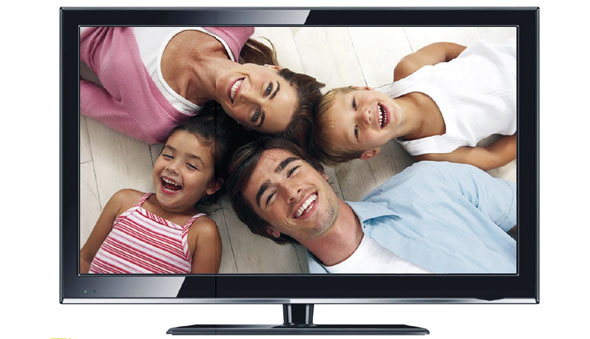Buyer’s Guide for TVs
By Ruth Manimtim-Floresca
Here, two respected tech bloggers share their tips on how to choose the best TVs for one’s home.
According to Abe Olandres who established YugaTech.com seven years ago, there are a number of TVs in the market today: CRT TVs which are the big and bulky ones with old-tech displays, LCD TVs which are slimmer and more commonly bought by consumers, and LED TVs which have more high-end displays and are very thin (measuring under one inch). He adds, “There are also the rare Plasma TVs. The 3D TVs nowadays are mostly LED or Plasma TVs.”
Alexei Rivera, a freelance web developer turned tech reviewer of consumer electronics at TheTechnoclast.com, says that top choices are usually between LCD, LED, and Plasma. “Let’s leave CRT and Projection TVs out of the discussion since they aren’t practical [to buy] anymore,” he explains.
Screen resolutions and prices
“There are a number of factors to consider when shopping for a TV. This is usually a weigh-in between LCD and LED and the budget will be the deciding factor,” points out Olandres. “LED TVs are the most energy-efficient, have high resolution, and normally operates at 40 to 120 watts. LCD, on the other hand, is the most cost-efficient but has relatively low resolution while Plasma offers one of the best picture contrasts and high resolutions as well.”
“LED TVs have dropped in prices significantly and cover a good range of sizes from small to midrange. They’re superior to LCDs because LEDs are brighter and produce better colors. The price difference is almost negligible these days so go for LEDs,” advises Rivera. “Plasma doesn’t come into the picture unless they’re around 50 inches or higher. They are practically the only choice when you’re going for larger screens.”
“Pretty much any TV above 30 inches these days have 1080P (Full HD) resolutions, so the choice is easily done for you,” describes Rivera. “Some TVs intermingle as PC monitors and can have unusual screen resolutions and aspect ratios. In reality, if you’re not watching HD movies/shows/games, then the resolution doesn’t matter. If you’re buying a TV in the 30”-36” range, you won’t notice the difference between a 720P HD movie versus a 1080P one unless you look really closely.”
Olandres states that TVs are normally suited for all types of viewers. “However, there are specific features that are available in one type and not on another,” he clarifies. “For console gaming, LED TVs are best suited since they have good resolution and high refresh rates (120-240Hz). Plasma TVs are great for watching movies because of the really high contrast because you get darker blacks and whiter whites in the picture.”
Size matters
Both tech reviewers agree that size is a major factor when shopping for a TV for several reasons:
“Screen size should always be proportional to the room it is placed in. If you need to turn your head to see the edges of the screen in your room, then it’s too big,” illustrates Rivera. “A screen should be seen completely and comfortably without needing to move too far from the TV or too near it. As a general rule of thumb, a TV should occupy a little under half the wall that it’s placed near to, unless the room is, of course, designed as a personal cinema.”
Olandres mentions that the most common TV size would be a 32-inch for the living room although that is now scaling up to 42 inches. “If you have more budget, there are 46”, 55”, and 66” models as well but they are still on the very expensive side.” He reminds that there should at least be five feet between you and the TV if you have a 32-inch and add a couple more feet for bigger screens for more comfortable viewing. “A 23-inch or 32- inch is the normal size for the bedroom. If you want one in the kitchen, a 23-inch or 18-inch would do.”
Other features
As a general rule, Rivera advises buyers to look for low response time and high refresh rates, especially for video games. “A 2ms response and 120Hz/240Hz is best. Plasma TVs for video games are not recommended as game displays will burn the pixels with continued use. If the room is also brightly lit, then Plasma should also be avoided because it is typically darker,” he portrays. “3D technology, at this point, is pretty much a gimmick and the general consensus is that it will never catch on, so avoid paying premium for it if you can.”
Rivera adds that when buying TVs for older people or less tech-savvy ones, it’s best to keep it simple, “Find TVs with easy-to-understand remote controls with big buttons.” For condominium users, he recommends TVs with wall mount capabilities to save space. “If you’re buying a TV for active children or for use with Nintendo Wii and other motion controlled video games, consider a TV with a very tough front panel to withstand any accidental hits.”
Other features Rivera lists down include HDMI input, which is now pretty much standard in brand new sets; audio input, which is great for consumers who want to hook up their own sound systems; and WiFi capability which lets users browse the internet in a limited capacity or view pictures and movies from other WiFi devices.
Olandres mentions other features buyers might also want to look into would PiP or Picture-in-Picture and DLNA function for wireless streaming.
“In the end, however, good picture quality still takes precedence over any additional features,” affirms Rivera. “Consider televisions as investments and don’t buy a substandard one just to save money. Plan around your TV purchase to make sure you’ll be able to take advantage of its capabilities when you buy one, like finding a source of HD movies (Blu-Ray player, PS3/Xbox, PCs), or finding a good audio system to complement it.”





Pingback: Grab A Copy Of MoneySense Jan-Feb 2012 Edition Today; Why? Because We’re In It! « The Technoclast